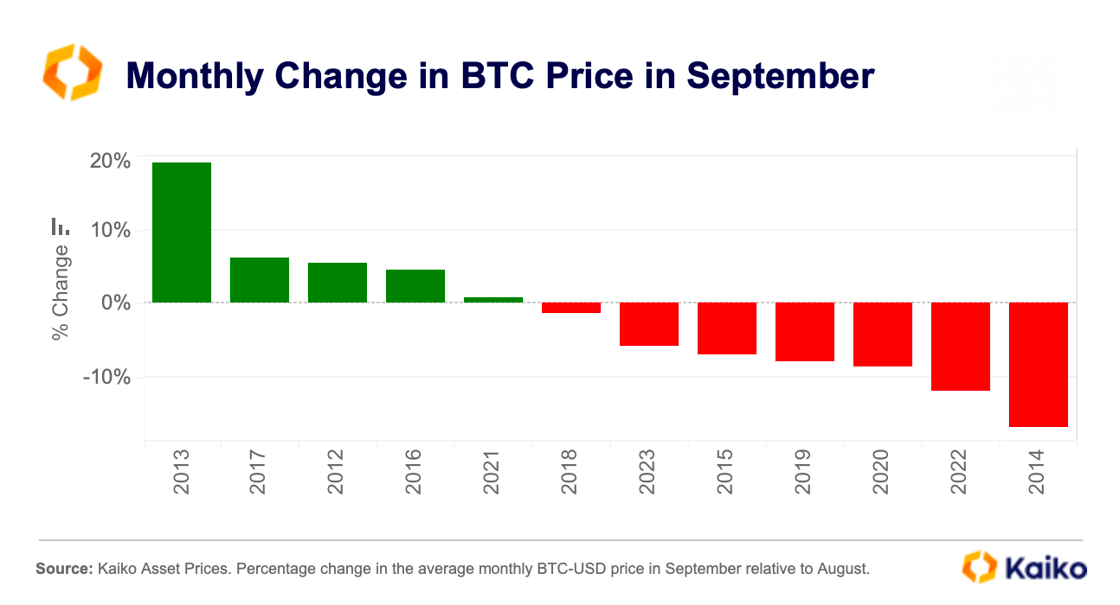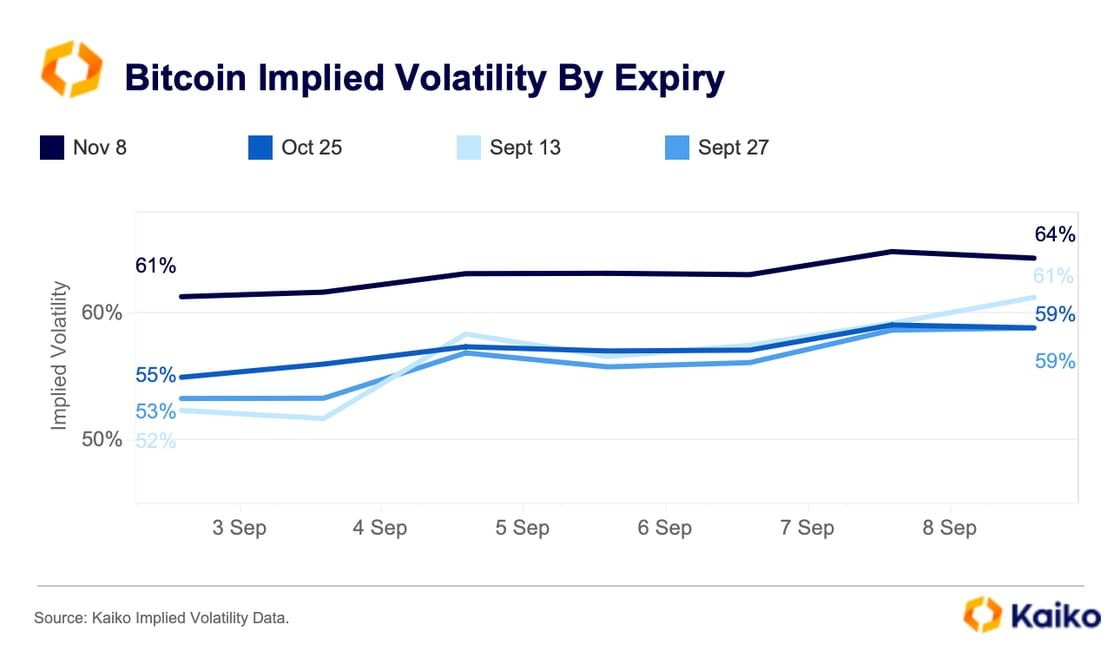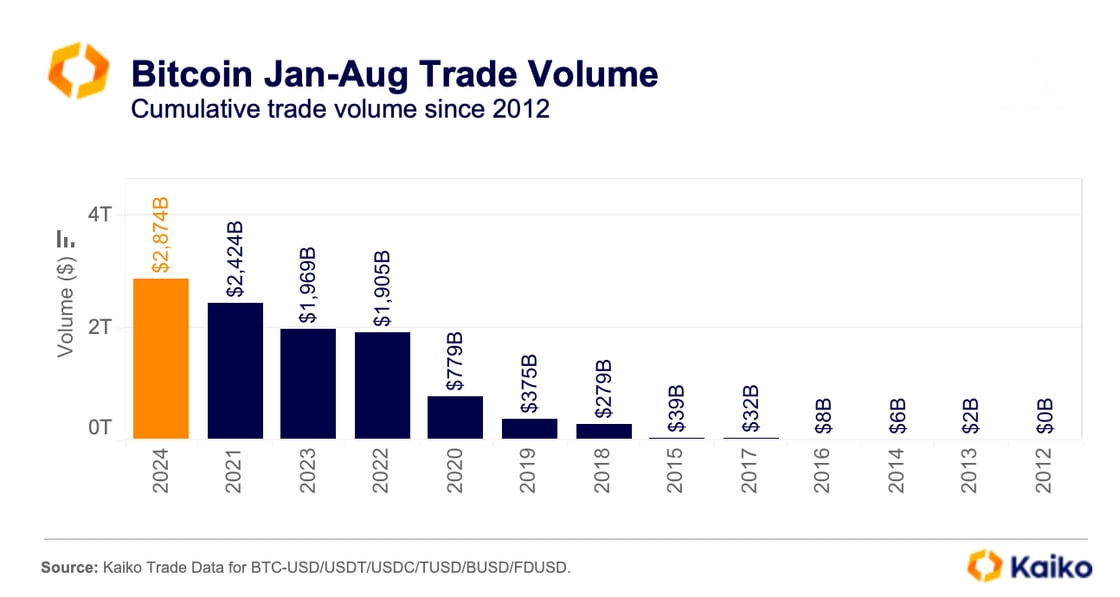Data Points
Coinbase loses market share in Q3.
The summer slump has eroded Coinbase’s market share. The leading U.S. exchange, which held over half of the U.S. crypto market from late February to early July, has seen its share fall to 41% in early September, down from 53% in June. Bullish has been the primary beneficiary, with its market share nearly doubling from 17% to 33% during the same period.
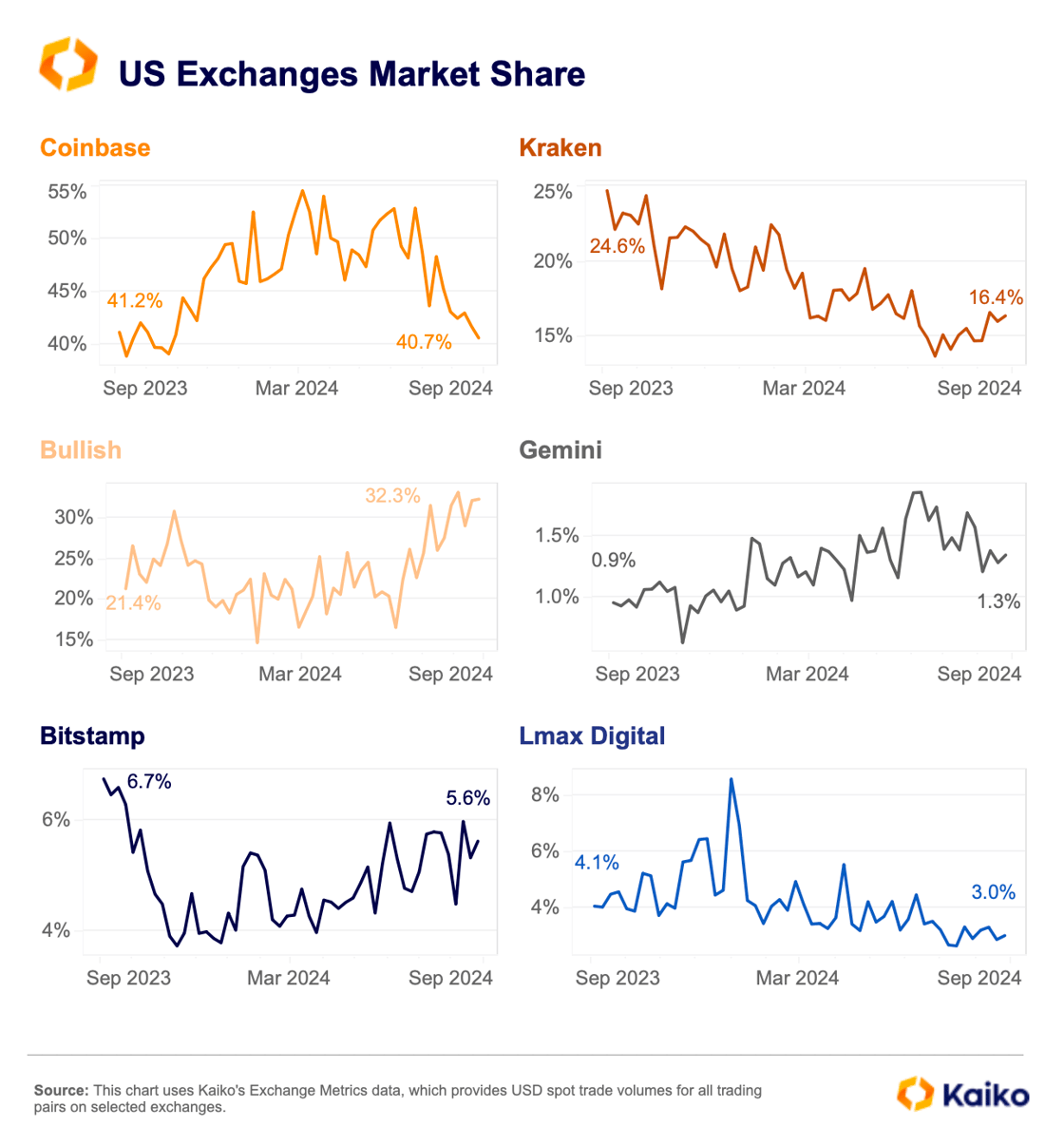
Since 2021, large US exchanges have significantly increased their market share. The top three exchanges by volume now hold nearly 90% of the market, up from 66% previously.
Meanwhile, smaller exchanges have seen their market share drop from 34% to 11%. This shift is driven by stricter regulations, lower earnings from decreased trading activity during the 2022/23 bear market, and the dominance of large exchanges like Coinbase and Kraken in institutional crypto trading, affecting smaller exchanges such as LMAX.
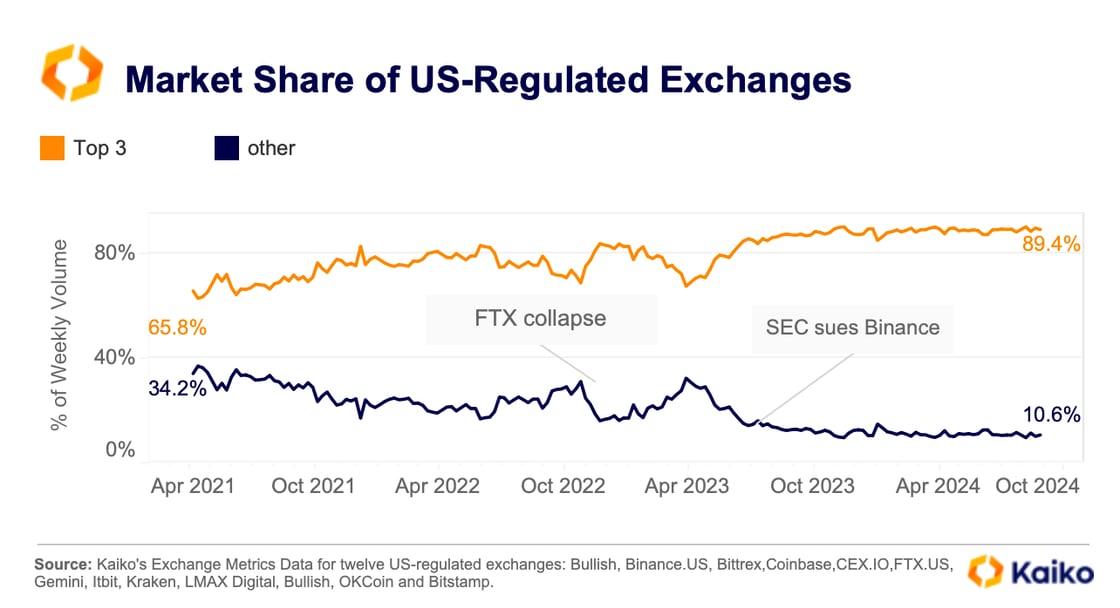
This trend is not limited to US exchanges, our recent Exchange Ranking Report shows that more than 87% of the trade volume in Q3 2024 is concentrated on just five centralized exchanges.
TON selling eases in September.
Telegram founder Pavel Durov was arrested upon his arrival in Paris last month and placed under official investigation on 12 charges. While Bitcoin saw little movement following the arrest, the market impact on Telegram-linked TON was significant.
TON’s trading volume surged from around $10 million to $156 million immediately after Durov’s arrest on August 24th, before retreating to the $15-20 million range. It then reached an all-time high of $169 million on August 28th, when French authorities placed Durov under official investigation. Prices also dropped by more than 20% within three hours between 7 PM and 10 PM UTC on August 24th and continued to decline over the following weeks.
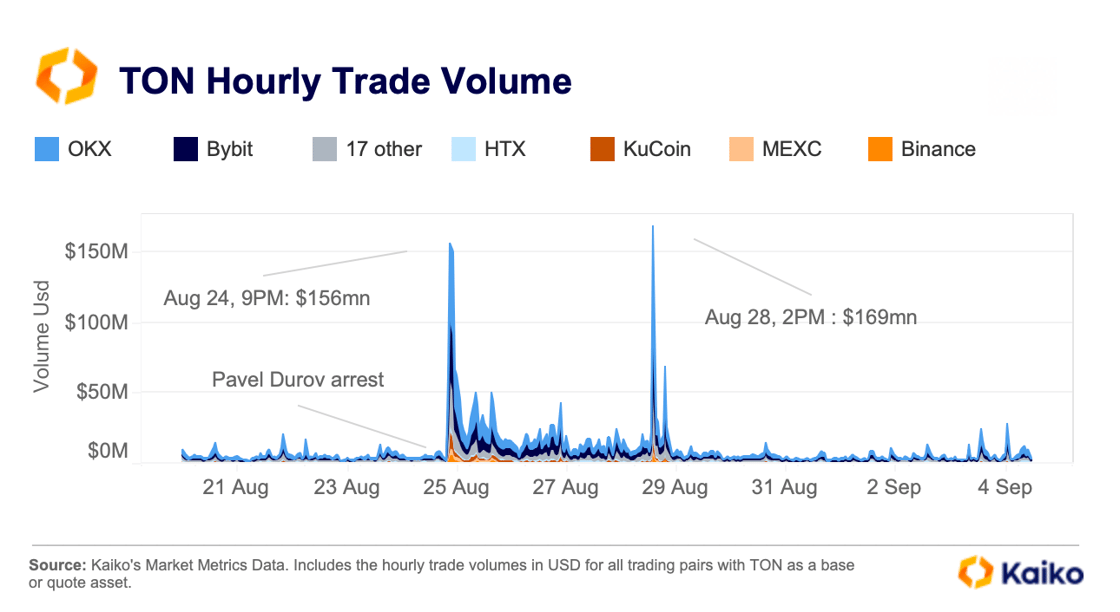
TON’s cumulative volume delta (CVD) flipped sharply negative at the end of August. The CVD shows the difference between hourly buy and sell volumes, reflecting the balance between buying and selling pressure. When the CVD dips below zero, it indicates net selling.
Following the arrest, selling was primarily driven by the TON-USDT and TON-USDC trading pairs on OKX and Bybit. Conversely, the TON-FDUSD pair on Binance registered net buying, similar to trends observed with other crypto assets, such as Bitcoin, during the August selloff.
Overall, selling pressure eased in early September despite funding rates turning negative. Interestingly, selling continues in TRY (Turkish Lira) markets, suggesting ongoing de-risking by some traders.
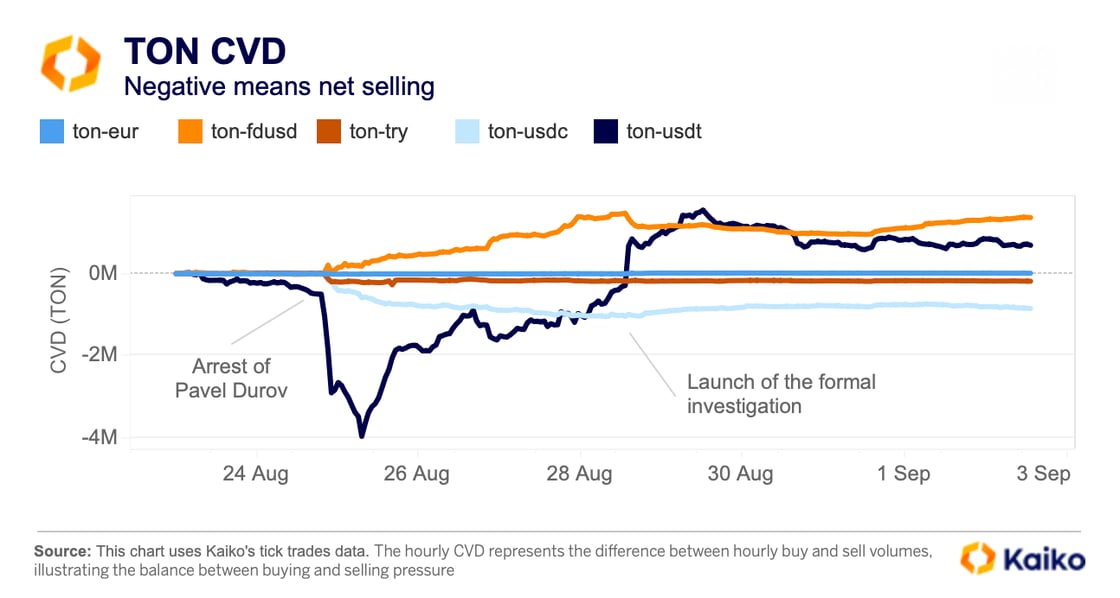
The share of stablecoin volume hits record high.
Despite the decline in crypto prices over the past few months, stablecoins have continued to gain market share over fiat currencies, indicating sustained demand. Currently, top USD and EUR-pegged stablecoins account for a record 86% of all crypto trades, while fiat currencies hold just 13% of the market.
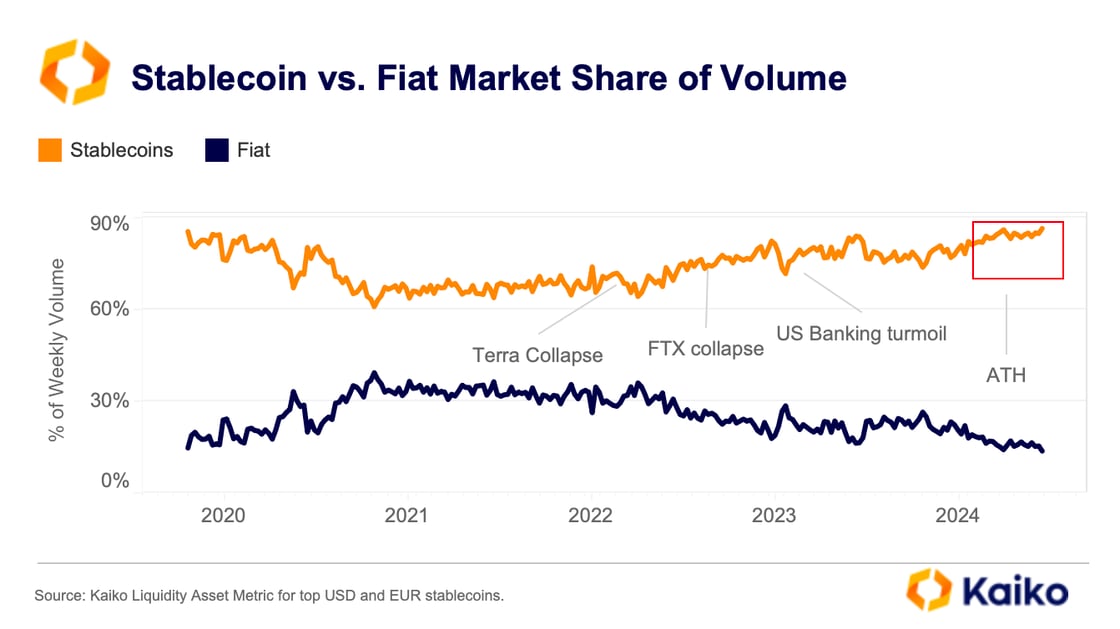
Weekly stablecoin trading volumes have surpassed $200 billion for most of the year, a level not seen since the 2021-2022 crypto bull market. Interestingly, while Tether’s USDT remains the dominant stablecoin by volume, its market share has been mostly stagnat this year at around 73%. In contrast, more regulatory-compliant alternatives, such as Circle’s USDC have gained traction.
Uniswap/CFTC settlement sees muted market reaction.
Last week, Uniswap Labs, the parent company behind one of the most popular decentralized exchanges (DEX), agreed to pay $175 million in fines to settle charges from the Commodity Futures Trading Commission (CFTC) for illegal “margined or leveraged retail transactions.”
According to the CFTC, the exchange facilitated the trading of tokens that allowed leveraged exposure to BTC and ETH by users in the United States via its frontend without being registered as a contract market. Uniswap has already delisted the tokens and has agreed to prevent derivatives tokens from trading on its platform.
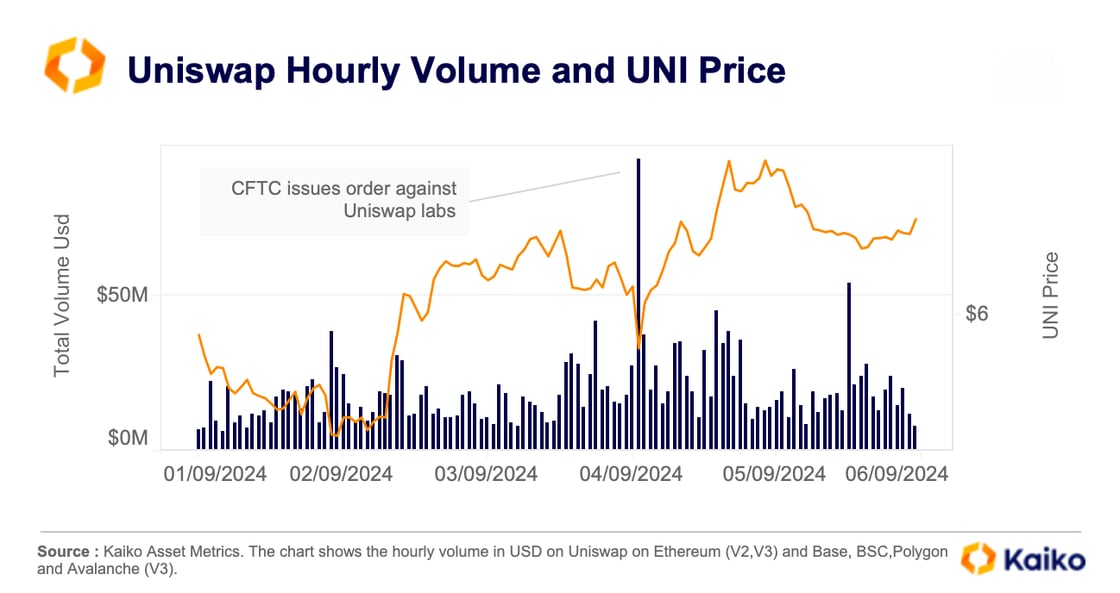
Overall, leveraged tokens represent only a small fraction of Uniswap’s trading volumes and the immediate market reaction was relatively muted. Uniswap’s governance token, UNI, initially dipped, but quickly recovered, closing the week up 6.6%. Hourly trade volume on Uniswap across Ethereum, Base, Polygon, Avalanche, and BSC spiked to $94 million after the CFTC announcement, before retreating. However, this increase was moderate compared to previous market events this year.
Despite its limited market impact so far, the ongoing regulatory scrutiny of the fast-growing on-chain derivatives industry could have a longer-term impact.


![]()
![]()
![]()
![]()



